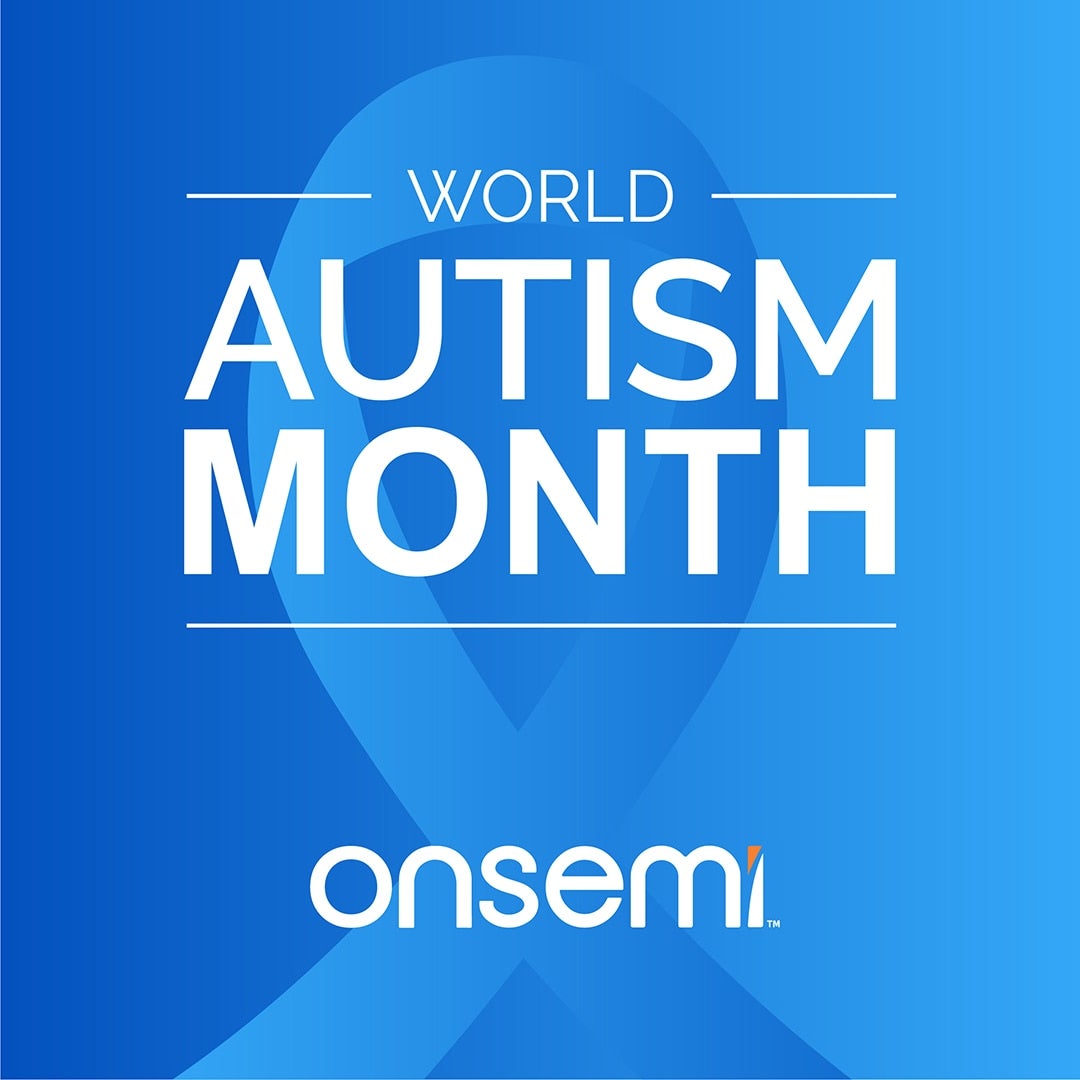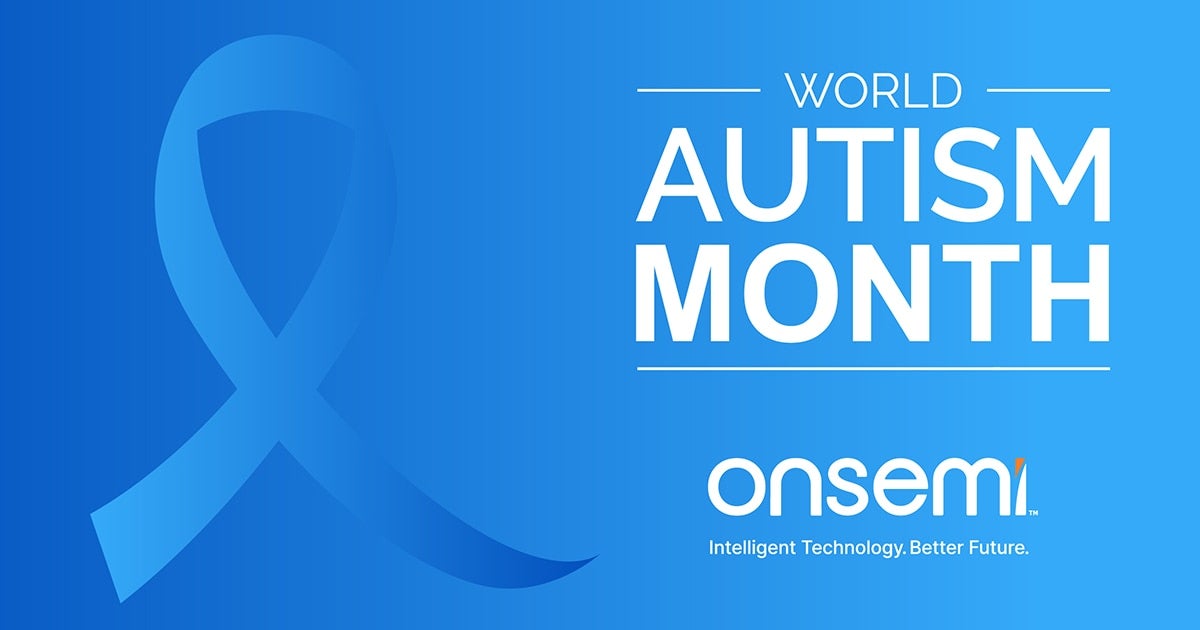World Autism Month encourages people to raise awareness and understanding of autism spectrum disorder (ASD). Globally recognized since the 1940s, autism continues to evolve as research improves our ability to diagnose and understand disabilities. As we know more about the autism spectrum, spreading awareness and acceptance is essential to create an inclusive environment for all people. In fact, in the United States, there has been a movement over the last few years to start referring to America’s Autism Awareness Month as Autism Acceptance Month to incite change for those with ASD.
At onsemi, we remain committed to diversity, equity and inclusion (DEI) for our global workforce and in a previous blog, we talked about changing the narrative of neurodiverse individuals in the workplace. As an autistic employee of onsemi, I am honored to continue the conversation and share some insights and information about ASD to help dispel some common misconceptions.
History of Autism
First, let's take a brief look at the history of autism, which is complex, crediting many doctors with discovering ASD. Psychiatrists Leo Kanner and Hans Asperger published research defining the condition in the 1940s, leading to global recognition of the disability. However, the term “autism” was coined by Swiss psychiatrist Paul Eugen Bleuler in 1911 and was first observed by a gifted young doctor named Grunya Sukhareva in Moscow in 1924. The first written paper on autism was published by Dr. Sukhareva in 1925. Still, her research was often overlooked or lost among many other clinicians publishing research during the 20th century. Ultimately, multiple doctors’ research contributed to defining ASD before its recognition as a diagnosis in the third edition of the Diagnostic and Statistical Manual of Mental Disorders (DSM-3) by the American Psychiatric Association (APA) in 1980.
Since then, the diagnostic criteria have evolved, and in 2013, the fifth edition of the DSM was published. The updated manual replaced the previous types of autism, Asperger's syndrome and pervasive developmental disorder not otherwise specified (PDD-NOS), with a single category of ASD. The evolution of the manual delivers more accurate diagnoses, better treatments and more thorough research for individuals with ASD.
For many years the term “Asperger’s” was used to describe people who exhibited the same behaviors as those with autism but did not have a developmental delay in language or cognitive development. However, research has shown no clear distinction between Asperger's and autism, and using a separate term led to confusion and inconsistencies in diagnosis. As a result, the APA decided to include all individuals on the autism spectrum under the ASD umbrella.
What is Autism?
Autism is a complex and multifaceted condition, and there is still much to learn and understand, but looking at the signs of autism and dispelling some common myths is a great starting point.
ASD is defined as a developmental disability caused by differences in the brain. It is believed there are multiple causes of autism, one being a genetic difference. ASD causes individuals to behave, communicate, interact and learn differently than others, but each person’s style and approach vary significantly. Symptoms usually show within the first 24 months of someone’s life, but diagnosing autism can be difficult because there is no medical test for it.
People with ASD can have trouble communicating and interacting socially and have restricted or repetitive behaviors. Treatments typically seek to reduce symptoms that interfere with day-to-day functionality and quality of life, including therapy or other methods.
One of the most pervasive myths is that all autistic individuals have exceptional abilities in specific areas, such as math or music. While it's true that some autistic people may have unique skills, this is not the case for everyone. Similarly, it is a common myth that all autistic individuals lack empathy. In reality, many autistic individuals are highly empathetic but may have difficulty expressing their emotions or understanding social cues.
Seeing the Signs
Recognizing the signs of autism led Kumar Subramaniam, Senior Manufacturing Equipment Engineer at onsemi’s manufacturing site in Malaysia, to take his son to a psychiatrist and confirm his mild autism. Subramaniam noticed his son had trouble sleeping, repetitive behaviors, a speech delay and a lack of focus. Since the diagnosis, his son has been receiving the resources he needs and has improved significantly, beginning to focus and express himself more. From Subramaniam’s perspective, people need to understand and accept that autism, as a part of neurodiversity, is a natural difference in human brains rather than a disorder.
“In my opinion, the idea of neurodiversity acknowledges and values the difference in human neurological and cognitive functioning,” said Subramaniam. “It recognizes that there are various approaches to thinking, learning, and information processing, all of which are equally valuable and valid. The celebration of autism and neurodiversity provides an opportunity to increase understanding of these conditions and to encourage acceptance of who they are.”
I hope that by educating people about autism and neurodiversity not only in my private life but also here at work, I can help change the perception of neurodiverse individuals to foster a sense of community and belonging and create a more inclusive and equitable culture at onsemi. As an autistic employee, I am grateful for the opportunity to share my knowledge about ASD in honor of World Autism Month.
---
This blog contains the personal opinions of the author and is intended for informational purposes only. This blog, and the information presented herein, should not be considered a substitute for professional medical advice or treatment. Always consult with a physician or other qualified health provider regarding your health, medical condition, and treatment.



